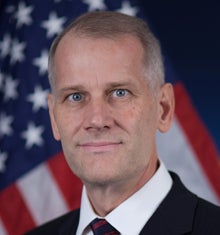DARPA Arcadia Program Aims to Develop Beneficial Bacteria Biofilms
Making up 13% of all carbon on Earth stored in living creatures, bacteria are a major part of the biosphere. As the most abundant of the planet’s lifeforms, they cover nearly every surface and cause major issues for the Department of Defense (DoD). The biofilms they live in are a major source of corrosion, drag and mold. Just corrosion alone cost the DoD $20 billion in 2016.
However, due to new bacterial control tools and thanks to new research allowing scientists to better understand biofilms, the Defense Advanced Research Projects Agency (DARPA) believes that these biofilms could be part of the solution rather than the problem. The new DARPA Arcadia program, drawing its inspiration from the ancient Greek notion of “Arcadian harmony with nature”, aims to redirect the structure and composition of biofilms in an effort to develop “probiotics” which serve to protect rather than damage military equipment.
According to Arcadia program manager Dr. Paul Sheehan:
“The Arcadia program will focus on biofilm-mediated problems, including corrosion, that are both DoD relevant and tractable, enabling us to build the tools and understanding for biofilm management. […] The Arcadia program aims to develop functional biofilms that not only inhibit costly microbial-induced corrosion but also can protect against it in the future.”

In order to meet DARPA expectations, advances will have to be made in biofilm formation modeling and in high-speed microfluidic testbeds which are needed to “grow, track, and test biofilms”. A number of approaches to biofilm generation will have to be examined as part of the program.
The program has four main application tracks:
- Drag on UUVs/Gliders
- Commercial UUV/Glider Corrosion
- Fuel-Tank Corrosion
- Black Mold Inhibition.
Each of these subprograms comes with a unique set of expectations which can be seen in detail by referring to the DARPA Biological Technologies Office announcement available here. The DARPA press release is available here.

